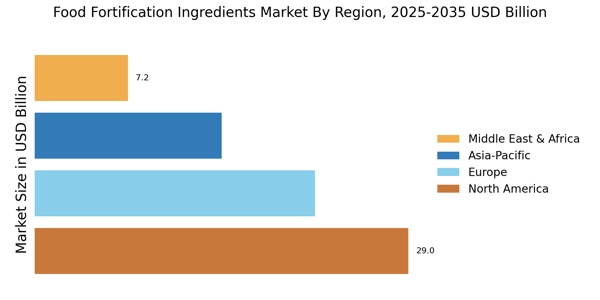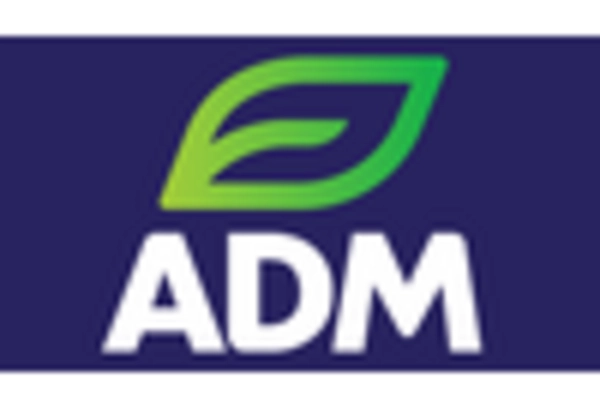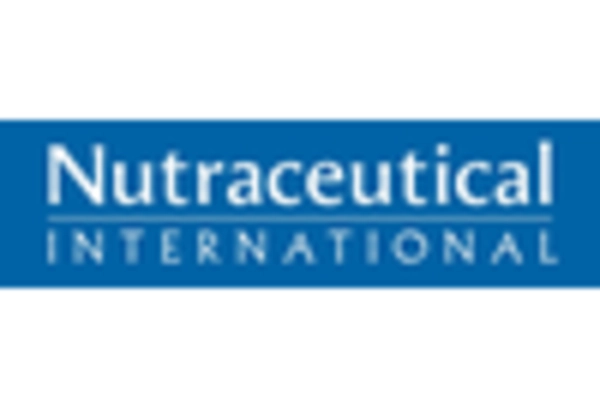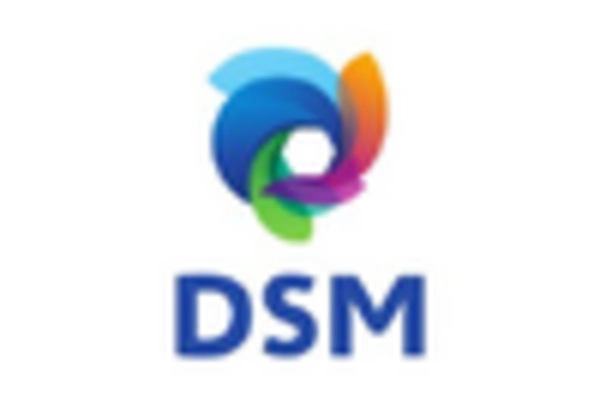Increasing Nutritional Deficiencies
The prevalence of nutritional deficiencies across various populations appears to be a driving force in the Food Fortification Ingredients Market. Reports indicate that a significant portion of the global population suffers from micronutrient deficiencies, particularly in vitamins and minerals such as iron, vitamin A, and folic acid. This situation has prompted food manufacturers to incorporate fortification ingredients into their products to enhance nutritional value. The World Health Organization has highlighted that fortification can effectively address these deficiencies, suggesting that the market for food fortification ingredients is likely to expand as more companies seek to meet consumer demand for healthier options. As awareness of these deficiencies grows, the Food Fortification Ingredients Market is expected to witness increased investment and innovation in fortification technologies.
Consumer Demand for Healthier Products
There is a notable shift in consumer preferences towards healthier food options, which significantly influences the Food Fortification Ingredients Market. As individuals become more health-conscious, they actively seek products that offer enhanced nutritional benefits. This trend is reflected in market data, which shows a rising demand for fortified foods and beverages, particularly among younger demographics. Companies are responding by reformulating existing products and developing new ones that incorporate fortification ingredients. The increasing popularity of health-focused diets, such as plant-based and organic, further propels this demand. Consequently, the Food Fortification Ingredients Market is likely to experience robust growth as manufacturers strive to align their offerings with consumer expectations for health and wellness.
Rising Awareness of Preventive Healthcare
The increasing emphasis on preventive healthcare is significantly influencing the Food Fortification Ingredients Market. As consumers become more aware of the importance of nutrition in disease prevention, there is a growing inclination towards foods that offer health benefits beyond basic nutrition. This trend is supported by research indicating that adequate intake of essential vitamins and minerals can reduce the risk of chronic diseases. Consequently, food manufacturers are increasingly incorporating fortification ingredients into their products to cater to this demand. The market data suggests that the trend towards preventive healthcare is likely to continue, driving innovation and expansion within the Food Fortification Ingredients Market as companies strive to provide products that align with health-oriented consumer preferences.
Technological Advancements in Fortification
Technological innovations in food processing and fortification techniques are emerging as a key driver in the Food Fortification Ingredients Market. Advances in microencapsulation, for instance, allow for the effective delivery of sensitive nutrients without compromising the sensory attributes of food products. This has led to the development of a wider range of fortified products that appeal to diverse consumer preferences. Additionally, the integration of digital technologies in food production processes enhances the efficiency and effectiveness of fortification. As these technologies continue to evolve, they are expected to facilitate the introduction of novel fortification ingredients, thereby expanding the market. The Food Fortification Ingredients Market stands to benefit from these advancements, as they enable manufacturers to create innovative solutions that meet the growing demand for fortified foods.
Regulatory Support for Fortification Initiatives
Government regulations and initiatives aimed at improving public health through food fortification are playing a crucial role in shaping the Food Fortification Ingredients Market. Many countries have implemented mandatory fortification programs for staple foods, such as flour and salt, to combat widespread nutrient deficiencies. These regulations not only encourage manufacturers to adopt fortification practices but also create a stable market environment for fortification ingredients. The support from health authorities and international organizations further reinforces the importance of fortification in addressing public health challenges. As regulatory frameworks continue to evolve, the Food Fortification Ingredients Market is likely to see sustained growth, driven by both compliance requirements and the proactive measures taken by food producers.


















Leave a Comment